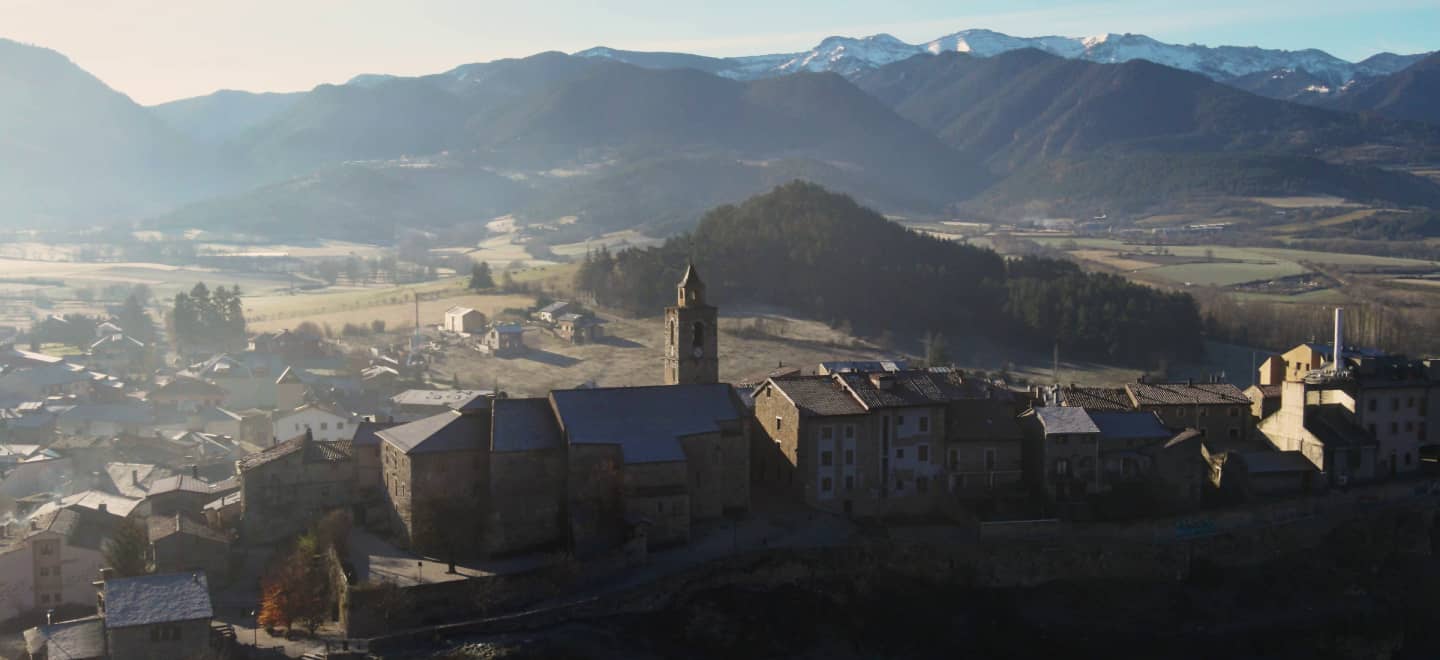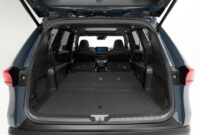Spain is a country that can be known through its history and its people, but also through its towns and the routes that connect them by road. On this occasion we head to the northeast of our country to get to know a part of the province of Lleida through a road trip in which we will visit some of its emblematic enclaves, we will savor them and we will see if it is feasible to do all this aboard a sustainable vehicle.
Are you coming on a trip?
Our route has as its guiding thread the N-260, a road also known as the Pyrenean Axis: not in vain, it links Port-Bou (Girona) with Sabiñánigo (Huesca) crossing the Lleida Pyrenees.
We are talking about a route that takes us to a beautiful natural environment, where each section offers you a different photo. After its recent renovation, driving around it is more comfortable and, above all, more pleasant.
In Puigcerdá, the N-260 forks and ends at the N-152: the path to choose for all those who want to head to France. The N-260, for its part, continues to La Seu d’Urgell and there connects with the N-145 road, which goes to Andorra.
This journey crosses Bellver de Cerdanya, Pont de Bar, Port de Cantó, Vilamur, Sort, Gerri de la Sal, Pobla de Segur, Senterada, Sarroca de Bellera, Coll de la Creu de Perves and Pont de Suert, where we find the N-230 that marks the connection with the Valle de Arán. We will not miss, either, the regions of Lleida Cerdanya, Alt Urgell, Pallars Sobirà and Alta Ribagorça.
Bellver de Cerdanya
Our first stop is Bellver de Cerdanya, one of the largest in the region. It is located on the side of a hill and the Pyrenees serve as a backdrop while the Segre river irrigates this town and its surroundings, full of farmhouses. A step away from here is the Cadí-Moixeró Natural Park and the line that separates it from Condado de Urgel.
Its main tourist attraction is its historic center with medieval airs. This fortified complex, on a rocky hill, makes up a labyrinth of cobbled streets and centuries-old houses. Do not forget to visit the Church of Sant Jaume de Bellver de Cerdanya, the Gothic building that acts as a lookout for the town.
And it is that he Vall de l’Ingla was one of the sources of inspiration for Gustavo Adolfo Bécquer to write ‘The Devil’s Cross’. Located in Cerdanya, very close to the towns of Bor, Pedra i Riu or Bellver, you will be able to disconnect until you forget what day it is. Its samples of rock art and the colors of its landscapes are famous, especially in autumn when browns, greens and yellows become the muse of any artist.
Ardovol
The time has come to enter the LV-4037, a narrow road that joins the N-260 with Ardovol: our next destination. A mountain village crowned by a Romanesque church: On the way to it, you may come across some of the Friesian cows that live in the area.
Hills of Cerdanya
Returning to the N-260, we pass through Martinet to take a winding road: the LV-4036. From his hand we will reach a town well known for the practice of Nordic Ski: Hills of Cerdanya. If you prefer to get to know this environment at another time of the year, we will tell you a secret: in spring, summer and autumn, when the snow has not made an appearance, it offers countless hiking trails that run through native forests with the Pyrenees as a backdrop. . If you are looking for a way to do sustainable tourism in complete harmony with nature, this is your place.
ansovell
After leaving several towns behind, we turn off, again, on the LV-4052: they are waiting for us Arsèguel, Cava and Ansovell. Cava has roads that any cyclist would dream of, and also many drivers. We follow the path to Ansovell, the capital of the municipality of Cava, in the Alt Urgell region. Talking about this place is talking about its grouped houses with tile roofs and wooden balconies, the Cadí river and the parish church of San Martín. A Romanesque construction from the 12th century, with a single nave, whose vault is sunken.
Sanctuary Mare de Deu del Boscalt
This solitary hermitage, located at an altitude of 1,440 meters, is classified as a Cultural Asset of Local Interest: its views are impressive. The sanctuary has a couple of important dates: the first Saturday in May (when the residents fulfill their vow to have liberated the towns of Ansovell and Cava from the plague), and the first Sunday in September, the most important. Do not miss the boxwood that is next to the sanctuary: it is more than 200 years old.
bescaran
The bitten asphalt and the powerful curves serve as a guide for the next stop on this Pyrenean road trip: Estamariu. Located in the northern part of the Alt Urgell region, it awaits us bathed by the Bescaran river and protected by both the Coll de Jou and the Serra de Banat: Here everything is nature and it will not take long for you to notice how a sensation of authenticity invades you.
We now come to a mountain village, which is part of the municipality of Les Valls del Valira: Bescaran. A place where tranquility reigns and, at the same time, It is perfect for practicing any sport… and also driving off-road. And if you come in autumn, you will have the opportunity to pick all kinds of mushrooms: a great example of sustainable tourism.
There are points that we cannot miss such as the Cabaña del Moro or the Ca l’Albós manor house, but without a doubt the most relevant is Bescaran Monastery. Its origin is unknown and only the bell tower of San Martín remains: built between the 11th and 12th centuries, it has six floors and the last three have friezes with Lombard-style arches and mullioned windows. It is a style similar to the one that we can see in the Romanesque ensemble of the Vall de Boí made up of eight churches and a hermitage, declared World Heritage Sites in the year 2000.
Seu d’Urgell
The road now takes us to La Seu d’Urgell: quite a reference since it is the capital of the Alt Urgell region. Along the way, the Segre and Valira river basins will be in charge of giving us indescribable landscapes. In this city we meet the only fully Romanesque cathedral preserved in Catalonia: It dates from the 12th century and is a treasure as it is a unique specimen.
La Seu d’Urgell is also known for being the capital of cheese: For more than two decades, in October, the Artisan Cheese Fair of the Pyrenees has been held with products from Catalonia, Aragon, Navarra, the Basque Country and France. So dropping by one of its cheese shops to make a purchase is almost a must. You can use this parenthesis to tune up your car: electric cars are welcome in this town in the Catalan Pyrenees as it has a station equipped with multiple poles.
Port of Canto
We set off again: Port de Cantó awaits. This mountain pass, located at an altitude of 1,725 metres, is located on the border between the municipalities of Soriguera, in the Pallars Sobirà region, and Montferrer i Castellbò, in the Alt Urgell region. Its curves will sound familiar to you if you are a fan of two wheels because it is usually a regular in La Vuelta a España and also in the Tour de France.
It is mandatory to stop at one of the multiple viewpoints that dot the road to contemplate the drawing left by the basins of the Segre and Noguera Pallaresa rivers. And we can’t avoid taking a detour onto an unpaved road to test the attributes of our car. on snow: the combination of winter tires and the all-wheel drive system put the adventurous point to this part of the trip.
Sort
This road trip comes to an end and our last stop is the town of the Lottery: yes, we are talking about Sort (which, in Spanish, means ‘luck’). In addition to buying a tenth to see if the town lives up to its name, be sure to visit this charming town protected by the mountains. In this impromptu walk you must go through the bastion of the town: the Castle of the Counts of Pallars. From here you can enjoy spectacular views of the hills of the Costa Negra.
The capital of Pallars Sobirà is, at the same time, the cradle of adventure sports such as canyoning, rafting or mountain biking. You will always have a hiking trail at your disposal because the Pallars Sobirà region has direct access to the Aigüestortes i Estany de Sant Maurici National Park (the only national park in Catalonia) and to the Alt Pirineu Natural Park: a protected natural area covering 80,000 hectares. Whatever your choice, spend a few minutes observing the landscape that surrounds you: it will never be the same as the colors change with each season and, almost, with each moment.
And, by the way, if you have time, don’t forget the Butterflies Museum located in Ribera de Cardós and the Ecomuseu de los Valles de Àneu: it is an entertaining and didactic way to better understand the natural and cultural reality of the region.
A gastronomic recommendation: Fogony
Before we have talked about cheeses, but, perhaps, it is not enough to recharge batteries. Just as we have plugged in our Peugeot along the way, it is time to fill our tank and for this we want to make you a proposal: Fogony. A family restaurant with one of the best value for money… taking into account that It has a Michelin star. Here, Zaraida, Jose and their son Pep defend local proximity products on a menu where there is no shortage of cannelloni, trinxat, coca or meats such as lamb, rabbit or pig’s trotters. Dishes with a star at an anti-crisis price.
The gastronomy of the area will not disappoint anyone. Its mountains and rivers provide game meat and fish such as trout. This route is also gastronomic, so You will not be able to miss the typical escudella, the butifarra, the chorizo or sausages such as the xorís or the secallona. And mushroom dishes, of course. You have before you your next route: have you already packed your bags?













